Mountain View’s Poor Growth Planning Can Be Stopped.
Downtowns are to our cities like kitchens are to our homes — the heart. Downtowns are gathering places for our community. Downtowns are where we discover a new book or the perfect outfit. Downtowns are where we can bump into a neighbor while walking our dog and decide to stop for a cup coffee or a glass of wine.
My family and I moved to Mountain View six years ago after falling in love with the wonderful downtown. We loved the quirky, one-of-a kind shops and restaurants housed in historic buildings. We loved the small-town accessibility, knowing we would walk to downtown for restaurants, coffee houses, bookstores, live music, and specialty shopping. We loved the vibrant streets and ambiance.
At that time, it was clear that the downtown reflected the diverse interests and vitality of its neighborhoods and we wanted to be a part of it. We also recognized that growth was inevitable, but were confident the city management would protect the assets that made the downtown unique. It appeared that the City Council had not sold out to developers and large ubiquitous, box and chain stores. We believed we had found our dream town.
For a while, our downtown appeared to avoid the pitfalls of poorly planned growth. Then slowly, one by one, pieces of our history and Mountain View’s public usability began disappearing.
One of these fatalities was the destruction of Pearson House at Villa and Bryant Streets, a very important historical building that residents fought to preserve 12 years ago.
It was taken down by the City, only to be replaced by a closed-to-the-public, 24 hour-guarded office building.
That plan was approved by the City Council with the Developer’s commitment that the first floor would be designed for public use. That promise was broken.
Why ruin the historic charm of Villa Street, part of our walkable downtown welcoming people to Mountain View?
 See those tables / umbrellas? No one uses them. The landlord and WhatsApp refuse to put in the cafe they promised.
See those tables / umbrellas? No one uses them. The landlord and WhatsApp refuse to put in the cafe they promised.
Office buildings create “Dead Zones” in our downtown.
 Dead zones and dark windows on Castro Street (our main st) at Quora HQ.
Dead zones and dark windows on Castro Street (our main st) at Quora HQ.
These Dead Zones discourage us from exploring other open businesses further down the street. Almost overnight, a number of new office buildings have sprung up on Castro Street, some with opaque windows, some with no name, providing no public access or interactivity, and creating more Dead Zones.
Now we are faced with the imminent threat of losing Chez TJ and Tied House on Villa Street to another office complex again, with the promise to build a restaurant on the first floor. Tied House and Chez TJ have been recognized by the City Council as historic buildings.
 WeilHeimer House, now and for the past 30+ years, home of Chez TJ.
WeilHeimer House, now and for the past 30+ years, home of Chez TJ.
Chez TJ has capitalized on this historic designation, using the history in its advertising materials for years! Structures of historical, architectural, and cultural significance enrich the quality of life in Mountain View. They provide the unique character that draws residents and visitors downtown.
 The popular Tied House is proposed for demolition.
The popular Tied House is proposed for demolition.
Growth is not inherently bad, in fact it can be welcome, but only when it is well planned. Office buildings as part of smart growth are welcome as they bring jobs to our community, but our downtown center is not the place to build them. “For Lease” signs are seemingly everywhere. “Public Notification of Building” signs are popping up, construction cranes are towering over St. Joseph Church.
 This lovely church is now blocked from pedestrian view from Castro Street.
This lovely church is now blocked from pedestrian view from Castro Street.
I found myself asking what is the “vision” for our wonderful town? Is there a plan? It looks like Mountain View is for sale to the highest bidder.
How can our Council permit the destruction of our downtown’s assets and replace them with office buildings? How are these office structures affecting our cherished businesses, the lifeblood of our downtown?
Over the past few months, I visited many of our downtown businesses. Shockingly, I learned that many are not thriving at all! The few that are surviving do so because they own the building and don’t have to pay exorbitant rent. All the businesses I spoke to reported that for the past two years their revenues have dropped, and many question if they can survive another year.
The downtown assault began with the promise that corporate expansion would provide more foot traffic for our restaurants, cafes and boutiques. Instead, what happened was that these corporate offices provide their own food, which keeps employees sequestered in their buildings.
 23 & Me right off Castro across from the Train Station.
23 & Me right off Castro across from the Train Station.
Restaurants such as La Fontaine, which has been serving MV residents for 16 years, told us they have no patrons from these offices.
When an office building developer does not build enough parking for its employees, the city collects fees in lieu of these needed parking spaces. It doesn’t matter how many fees we collect, we don’t have the parking we need to support small restaurants, cafes and shops. Office workers park their cars in our public parking spaces all day, or in front of residences nearby. This explains, in part, why it is nearly impossible for our residents, visitors, small business owners and their employees to park during peak hours. Neighbors and visitors are so frustrated by the limited parking that many no longer enjoy going downtown. Several small business owners have been paying over $300 per year to park per space. While the City Council is considering raising the price per space for these office workers, it’s also considering charging for all parking regardless of time or use! This would be devastating for our small downtown businesses.
 Several dead trees sit on Castro, outside our City Hall, and one is missing, for the past couple of years.
Several dead trees sit on Castro, outside our City Hall, and one is missing, for the past couple of years.
Empty store fronts, “Dead Zones,” lost historical buildings, limited parking and constant construction do not make for an inviting downtown. The streets and sidewalks are not being cleaned of litter, food, and waste. Street and median landscaping is dismal, even our City Hall median is populated by dead trees.
There is no decorative sign welcoming visitors to our downtown. Palo Alto, San Carlos, Los Altos, Burlingame, Campbell, Los Gatos, as well as many other California towns have sensible planning and protections in place that strengthen their downtowns. Why don’t we?
Actually, we do. Mountain View does have what is known as a <em>precise plan</em>, a plan that has a strict process of identifying community-valued assets, such as historic buildings, green spaces, interactive walking spaces, etc., which are protected when designing a community. Our downtown precise plan was written by experts: architects, historical preservation and business development specialists. This is an important practice that all of our neighboring cities follow. The bad news is that Mountain View has not adhered to its precise plan for many years and the negative impact is easy to see.
There is something we can do to save the Mountain View we love. We have the power, but we must act.  Several dead trees sit on Castro, outside our City Hall, and one is missing, for the past couple of years. We must demand that the City Council PAUSE on any future development and follow the Downtown Plan that taxpayers funded.
Several dead trees sit on Castro, outside our City Hall, and one is missing, for the past couple of years. We must demand that the City Council PAUSE on any future development and follow the Downtown Plan that taxpayers funded.
The City of Sunnyvale is a lesson we should learn from—they stood up for their historic downtown when it was almost too late and all that is left is a block of Murphy Street, the most vibrant part of their downtown. They continue to regret their decision to tear down the rest of their historic downtown.
Help us save Mountain View! Visit www.livablemv.com/savedtmv-petition to sign our petition and learn about other ways you can help. Together we can make a difference in our city.
Please contact us. It’s time to remind the City Council who they work for.
WE CAN DO THIS!
– Carole W.

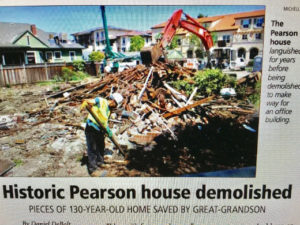

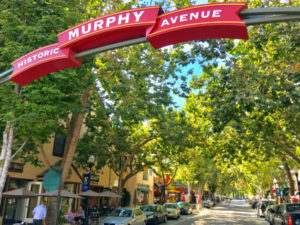
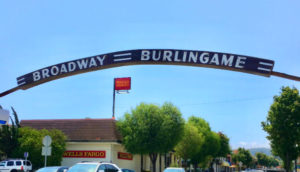
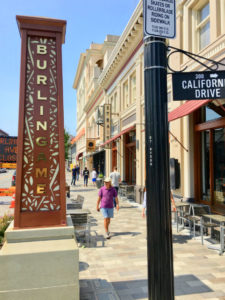
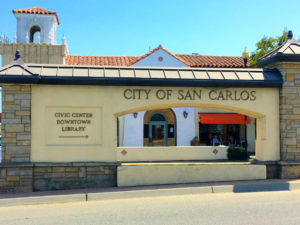
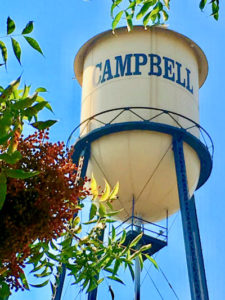
Recent Comments